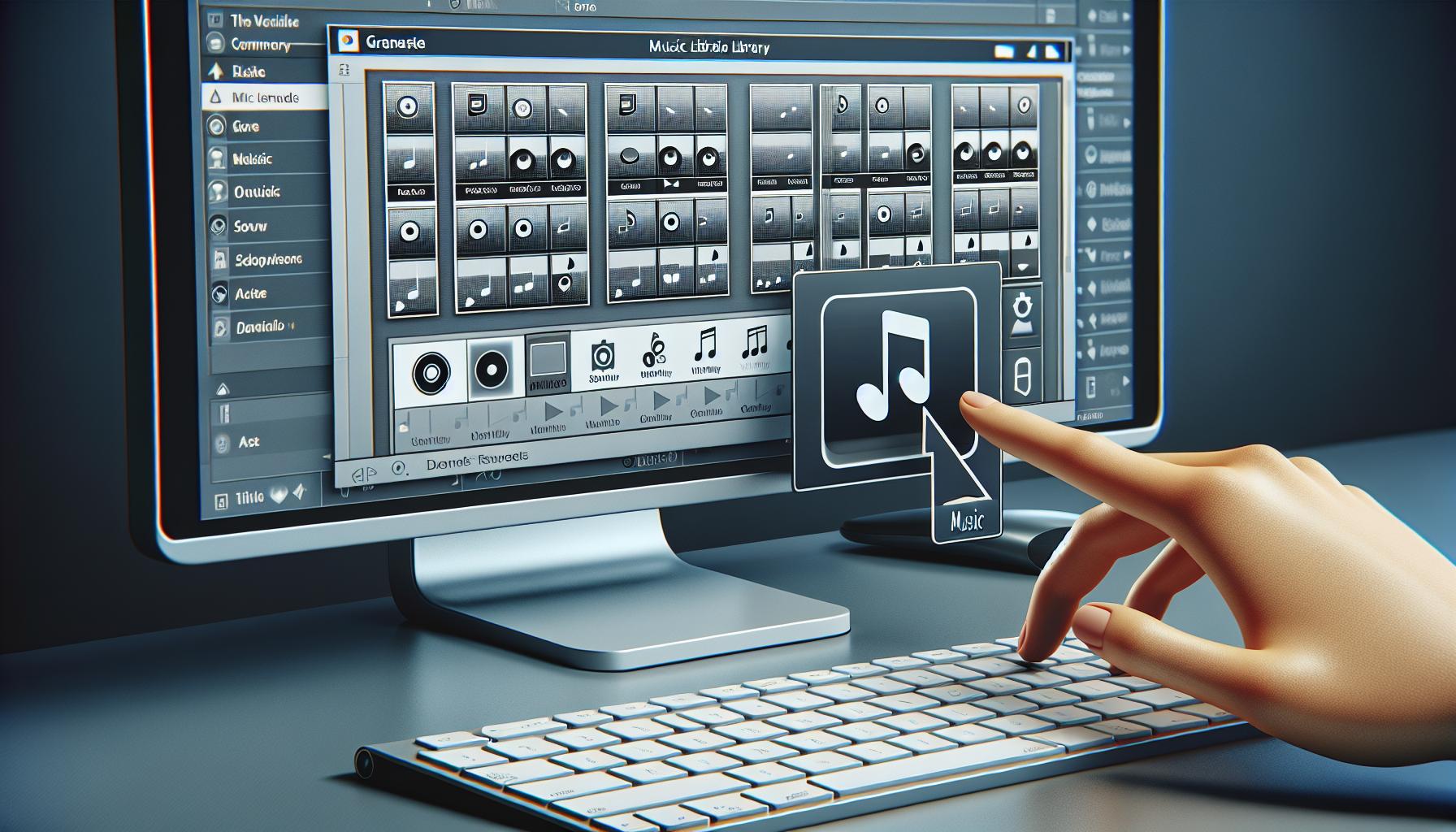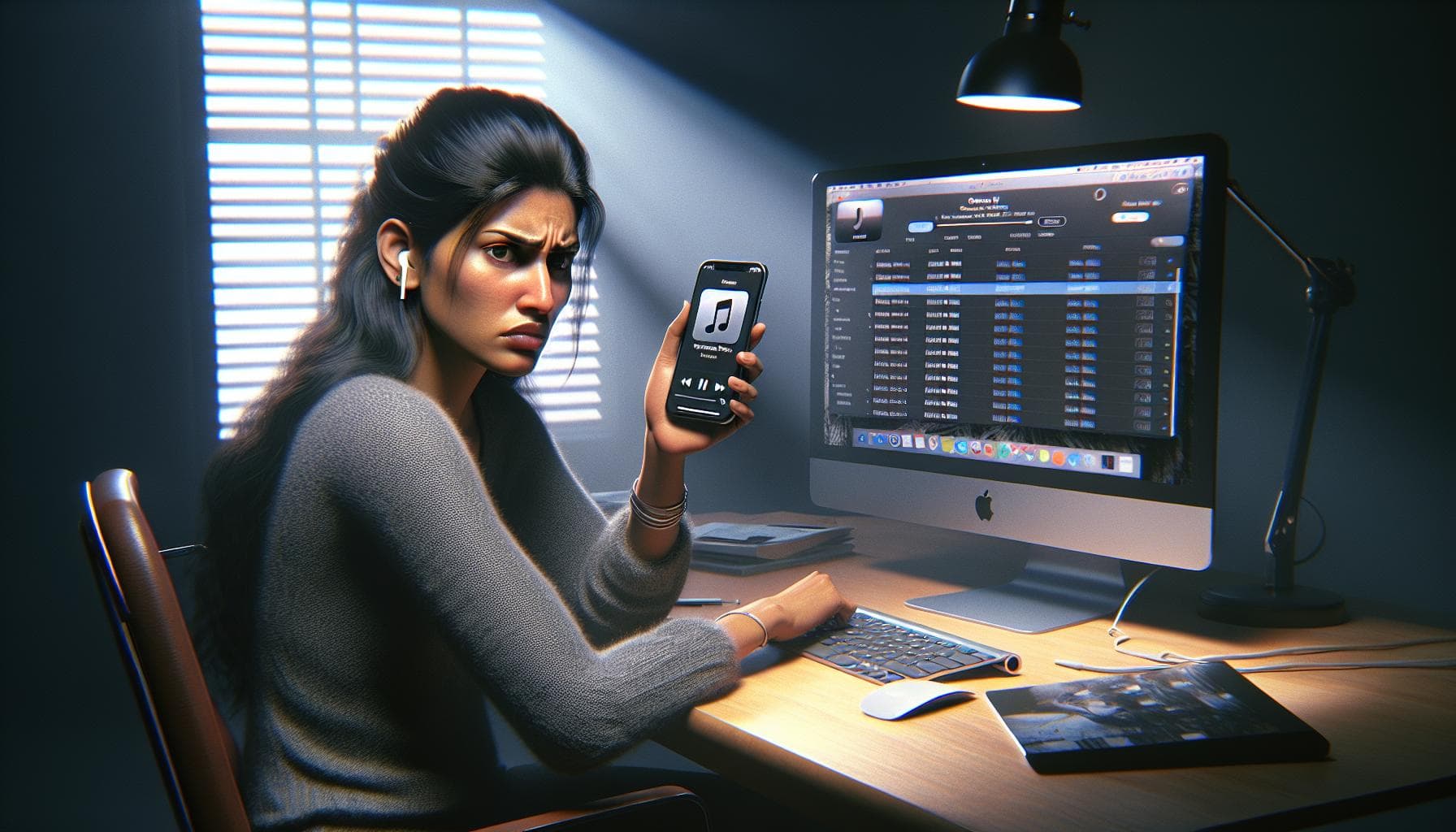So, you've got a killer playlist on iTunes and you want to take it on the go with your iPhone. Don't worry, you're not alone. Many Apple users face this dilemma. Transferring music from iTunes to your iPhone doesn't have to be a complex process.
Why Transfer Music from iTunes to iPhone?
You may wonder why you need to perform this transfer. It's simple, flexibility. Having your favorite jams stored on your iPhone, liberates you from the constraints of always requiring an internet connection to stream songs.
Another aspect that shouldn't be undermined is the quality of music. Whilst streaming services do offer high-quality music these days, they still can't outstrip the bit rates and sound quality of a track stored directly on your device giving you a premium auditory experience.
Moreover, it's a known fact that constant streaming can eat into your allocated data usage. It might be of relief to your ears, but certainly puts a pressure on your monthly bills if you're not under an unlimited data plan. With the music transferred locally, you will not have to worry about this issue anymore.
Finally, one of the most dominant reasons is the ease of access. You might spend hours curating your perfect playlist, only to find it disappear if you switch devices or face any kind of system glitch. By transferring your go-to music playlist from iTunes to iPhone, you ensure that it’s there with you, at your service whenever you want, wherever you go.
Hence, it's not just about downloading songs; it's about securing your music enjoyment. The next segment of the article will delve into the step by step guide to smoothly transfer your music from iTunes to iPhone. Stick around to unlock the technique.
Preparing Your iTunes Library for Transfer

Before you can begin the process of transferring music, you'll need to ensure your iTunes library is organized and ready for the transfer. It's essential to ensure that your music is well-arranged, and album details and playlists are up-to-date.
Begin by updating your iTunes software. Often, developers introduce new features and improve existing functions that can help you transfer music more efficiently. For a seamless transition, make sure that you're using the latest version of iTunes.
Next, check that your music files are in the right format. Most iOS devices accept music files in MP3, AAC, AIFF, WAV, and Apple Lossless.Encoder format. If your files aren't in an acceptable format, you'll need to convert them. There are countless online music converters that can help with this - just remember, always opt for a high-quality conversion.
An often-overlooked step is cleaning up your iTunes Library. Organize your music by deleting duplicates, adding missing album artwork, and rectifying incorrect song names. This step ensures your iPhone music library is as organized as possible after the transfer.
Also, consider creating an iTunes backup. It's always better to be on the safe side. In case something goes wrong with the transfer, you'll still have your music library intact.
Finally, sync your iTunes library across your devices with the help of iCloud Music Library, if you have Apple Music or iTunes Match. This way, any changes made to your library will be updated across all your devices, ensuring consistency.
By properly preparing your iTunes library, you're not just setting yourself up for a successful transfer - you're also improving the state of your iTunes collection. Next up, we'll provide a detailed guide on carrying out the actual transfer process.
Transferring Music Using iTunes
Your iTunes library is squeaky clean and primed for action. Are you ready for the next phase? Let's put that beautifully curated library to good use by moving those tunes to your iPhone.
First thing's first. Open iTunes on your computer and ensure you've got your iPhone at hand. Now, connect your iPhone to your computer with a USB cable. Watch for a small iPhone icon to pop up on the iTunes screen. Do you see it? That means your iPhone is connected and ready to receive some music!
On to the next step, selecting the music. Click on your iPhone icon and this will take you to the settings page. You'll see a column on the left. Select Music from the options. Now, ensure that Sync Music option is ticked. Why is this vital? This feature lets you choose whether to transfer your entire library or only selected playlists, artists, albums, and genres.
But hang on, you gotta ask yourself: is there enough space on your iPhone? Your iPhone's music storage cap could limit your musical flights of fancy. Luckily you needn't detective it out. iTunes will let you know with a colorful display at the bottom of the screen.
Ready for the magic? Click Apply. iTunes will now start syncing your chosen tracks to your iPhone. Time for a breather while the transfer takes place. You can enjoy this gloriously geeky moment of music teleportation knowing you've conquered a task many struggle with!
Savor the moment, but stay tuned! There's more coming your way on managing your iPhone music library like a pro.
Transferring Music Using iCloud
Following sync with iTunes, let's dive into a more dynamic way of transferring music. iCloud, Apple's mighty cloud service, presents an automatic method to keep your music up-to-date across all your devices - including your iPhone. Mainly, there are two methods to transfer music using iCloud: iCloud Music Library and Apple Music.
iCloud Music Library
First, let's focus on the iCloud Music Library. It's a wonderful feature allowing you to access your entire music library on any device signed into your Apple ID. The setup is simple:
- Turn on iCloud Music Library on your computer. Open iTunes and from the top, select
Edit > Preferences > General. PickiCloud Music Libraryto turn it on. - Enable iCloud Music Library on your iPhone. Open
Settings > Musicthen, toggleiCloud Music Libraryto On.
As soon as you enable this feature, you'll notice that your library syncs via the internet. This process might take a while depending on your internet connection speed and the size of your library.
Apple Music
What if you're an Apple Music subscriber? You have an easier option. Automatically, all music from your Apple Music subscription is available on your iPhone when connected to the internet. But to download music and listen offline, you need to:
- Find the song or album you want to download.
- Tap the +Add button to add it to your library.
- Press the cloud icon to download it to your local storage.
Remember, the space on your phone is precious. Check your phone's storage before downloading too much music.
These options through iCloud allow you to stay connected with your music on the go, without the need for manual syncing through iTunes. They're definitely worth exploring if staying up-to-speed with your music selection is vital to you. In the following sections, we'll further navigate other ways to manage and optimize your iPhone's music library.
Troubleshooting Common Issues

Sometimes, despite meticulously following the steps, you may hit a snag while trying to transfer music from iTunes to your iPhone. But don't fret! We'll discuss some common issues and how to navigate them.
One recurring problem users face is the 'Greyed Out Songs' issue. You might see your meticulously curated songs, but they're frustratingly unplayable. Often, an outdated iTunes or iOS version is the culprit. Regularly updating your software mitigates this issue.
Can't find your music after transferring? The 'Music Not Showing on iPhone' bug is another common grievance. Indeed, a glitch causes songs to be hidden. Unhiding purchases in iTunes often solves this problem.
Sometimes you might end up seeing duplications. This 'Duplicate Songs' issue usually arises due to syncing errors. Resetting and resyncing your iTunes library on your device should clear up these pesky duplicates.
Your iPhone may also refuse to sync with iTunes all together. The 'iPhone Not Syncing with iTunes' issue can be caused by several factors, including outdated software, insufficient storage, or incorrect settings on iTunes. Try updating your software, clearing some space on your iPhone, and checking your sync settings in iTunes.
You've done it all right. The songs are in your library. But they just won't play. Enter the 'Songs Won't Play' problem. This can take the wind out of your sails, especially when you're excited about your new music. An expired Apple Music subscription or unaccepted terms of service often cause this. Ensuring you're running the latest software, have an active subscription, and accept the service terms should see the tracks springing to life.
So, carry on. Cruise through these bumps, and keep that music flowing! Remind yourself: the sweet harmony of your favorite tunes on your iPhone is just a troubleshooting step away.
Conclusion
You've powered through the challenges of transferring music from iTunes to your iPhone. You've tackled greyed-out songs, missing music, duplicate tracks, syncing issues, and unplayable tunes. Remember, the key is persistence. Don't let a minor hiccup stop you from enjoying your favorite melodies on your iPhone. Keep these troubleshooting tips handy for a smooth music transfer experience. With patience and practice, you'll master the art of moving your music. Now, it's time to press play and let the music flow. Happy listening!
Frequently Asked Questions
Why do some songs appear greyed out and unplayable on my iPhone?
This issue could arise from a music file format that your iPhone can't read, or perhaps the song file may be corrupt. Check if the music file is in a format compatible with the iPhone.
Why is the music not showing on my iPhone after transferring from iTunes?
The most common reason is that there could be a syncing issue between iTunes and your iPhone. Make sure both your iPhone and iTunes are updated to the latest version.
Why do I see duplicate songs on my iPhone?
This usually happens when the "Manually manage music and videos" option is selected in iTunes. To solve this problem, try unchecking this option.
Why is my iPhone not syncing with iTunes?
This could be due to an outdated version of iTunes or iPhone software. Other times, it could be a problem with your USB connection, or a lack of storage space on your iPhone.
Why are some of the transferred songs not playing on my iPhone?
The song file might be in a format your iPhone can't play or it could be corrupt. Verify if the song file is compatible with iPhone or try transferring the file again.




